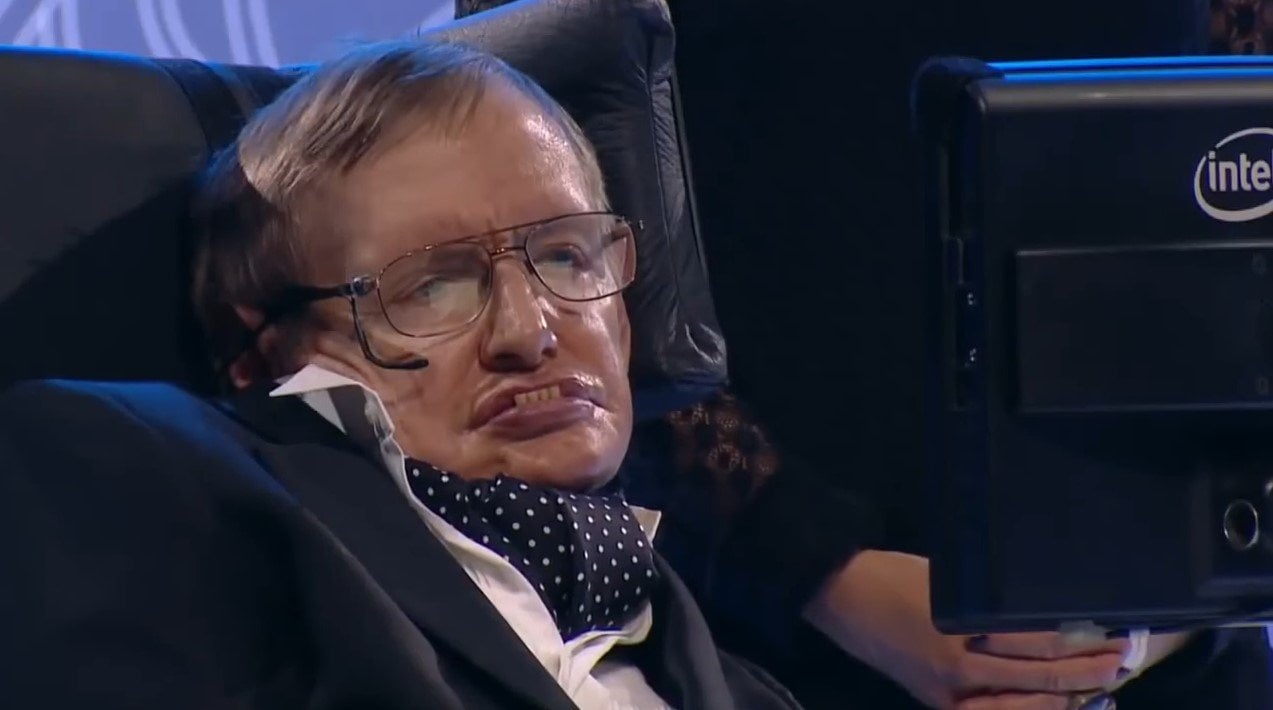Guess who has been invited to Stephen Hawking’s memorial service next month – time travelers. Yes, the same lot for which Hawking once threw a party, but, for which, no one turned up. It appears the Stephen Hawking Foundation again wants to test the theory that eluded the British physicist for several years.
The Stephen Hawking Foundation is inviting the public to apply for the tickets to attend Hawking’s memorial service at Westminster Abbey on June 15, where his ashes will be interred alongside the graves of Charles Darwin and Isaac Newton. The application form is extremely simple. People need to put their date of birth, which can be any day up to the end of 2038.
The option for entering a future date of birth was first spotted by London blogger ianvisits. “Professor Hawking once threw a party for time travelers, to see if any would turn up if he posted the invite after the party. None did, but it seems perfect that the memorial website allows people born in the future to attend the service. Look out for time travelers at the Abbey,” the blogger said.
According to the Stephen Hawking Foundation, all the applicants so far for the service live in the present, but there is still time for the time travelers to enroll. “We cannot exclude the possibility of time travel as it has not been disproven to our satisfaction. All things are possible until proven otherwise,” a spokesman told BBC.
The foundation has a message for the time travelers as well saying, “If you are traveling to the service from a different time, you will need to bring proof of where and when you were born.”
Stephen Hawking, in a 1992 essay Space and Time Warps, suggested that it could be possible to travel in time and space, but only into the future (not the past). “This picture would explain why we haven’t been overrun by tourists from the future,” he said. In 2009, he even hosted a “time traveler party” the invitations for which were sent only after the event.
The invitation to the event not only listed the address in the usual way, but also the coordinates in time and space. However, after no one attended the party, he said that it was “experimental evidence that time travel is not possible.”
In a Discovery Channel documentary the great scientist made of the event, he said: “I’m hoping copies of it, in one form or another, will survive for many thousands of years.” Further, he said that one day someone from the future may find this information and use a time machine to come “back to my party, proving that time travel will one day be possible.”
Speaking to BBC Radio, Sarah Bridle, a professor of Astrophysics at the University of Manchester, said the scientist was curious about time travel even after the 2009 party. “He was curious and he had a great sense of humor,” she said. “He said he combined his two favorite things, experiments and champagne to put on this party.”
Stephen Hawking’s memorial service ballot for the 1,000 tickets is available on stephenhawkinginterment.com, and closes Tuesday. Just hours after the opening of the ballot, it got over 12,000 applications from more than 50 countries. Prof Hawking died on March 14, almost fifty years after he was diagnosed with a rare form of motor neuron disease. Hawking dedicated his life in studying how time began and the mysteries of blackholes.
Wormholes have often been cited as a potential route for traveling in time. A New Zealand mathematician Roy Kerr in the 1960s noted that a spinning black hole does not collapse into a point, rather into a ring. And, if something goes into that ring it might travel in spacetime, or wormhole. Further, the scientist claimed that the two ends of the wormhole might open to a different universe, or to a different point in the same universe.
Scientists, however, have still to find evidence for wormholes. Another theoretical way of traveling in time is by traveling faster than the speed of light, something like the U.S.S. Enterprise in Star Trek IV: The Voyage Home. Einstein calculated that it would require an infinite amount of power to travel faster than light. Though it is theoretically possible to send signals back in time, it still is a mystery if it works with people.





